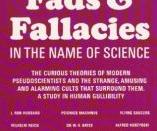Outline
I. Introduction
II. The Fallacies
i. Appeal to Authority
ii. Appeal to Emotion
iii. Slippery Slope
iv. Begging the Question
v. Common Belief
vi. Appeal to Ignorance
vii. Two Wrongs
viii. Appeal to Pity
III. Conclusion
IV. References
Introduction
When thinking in terms of critical thinking, a fallacy is described as an incorrect pattern of reasoning, an unsound argument, a method of persuasion, and is used intentionally and unintentionally. A fallacy can also be defined as a form of argument that seems or appears or is perceived. It only relates to the pattern of thinking or argumentation that leads to the conclusion. The conclusion may be true even if the argument is fallacious.
Fallacies are inaccurate notions that can weaken a writer's argument and reduce his credibility. Readers need to be critical in determining what points they accept and should challenge ideas that appear logically flawed to them. A system of reasoning with reference to deductive certainty and inductive probability can point readers to a reasonable position.
Writers need to be aware of fallacious reasoning and should make deliberate attempts to eliminate fallacious statements or expressions that lean towards fallacies if they are to truly contribute to the development of literary works. Writers can reduce the possibility of fallacies in their arguments if they follow a structure like the Toulmin Method in which the claim is made, reasoning or evidence is provided to support the claim, the warrant or connection is made between the reason and the claim and the grounds for supporting the claim are provided. The writer will also address refutation or opposing viewpoints, provide his objections against that refuting argument and include a rebuttal that should seek to dispel doubt regarding the point that he wishes to promote in the reader's mind.
In this paper Team...


